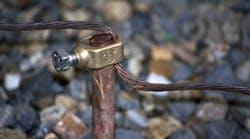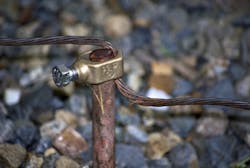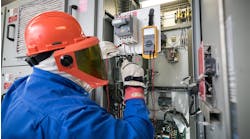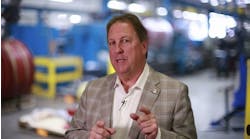From all indications, some recent equipment losses are due to transient voltage damage. How should you respond?
Often, the “solution” is to drive ground rods everywhere. A motor failed, no problem; we prevent that by driving a ground rod through our nice factory floor and bolting it up. The sad truth is that this response accomplishes nothing. The soil resistivity is just too high to create an effective low impedance path back to the source.
Soft starts on large motors may not stop all sources of load side transients, however. If that’s your situation, then a surge suppression system is needed. But consider your system carefully, understanding that a given surge device will reduce the transient voltage only so much. Think of a series of voltage reductions, and design a tiered system accordingly.
And, yes, of course you want to ensure all non-current-carrying metallic objects are bonded as required by Art. 250, Part V of the National Electrical Code (NEC).





